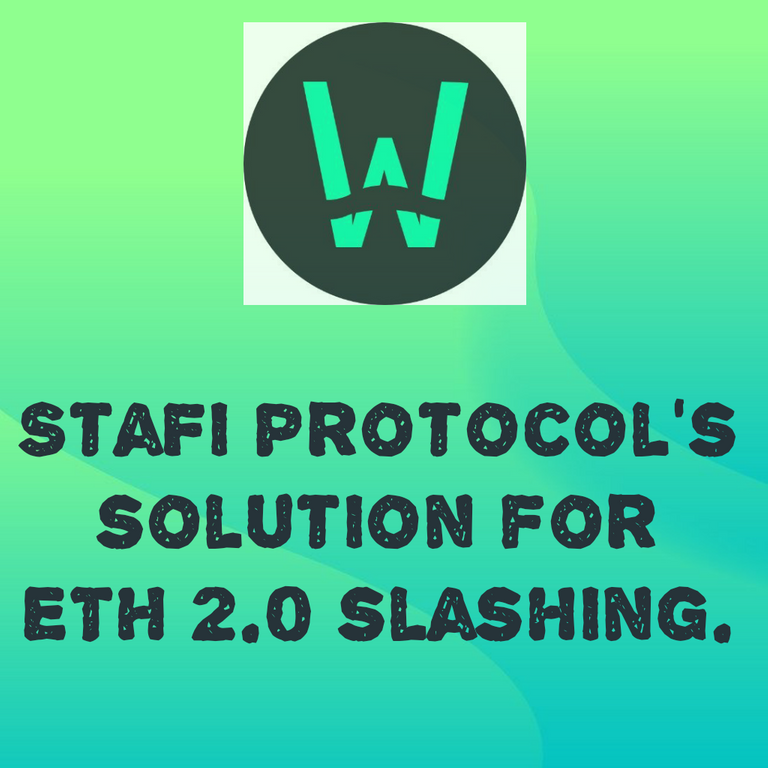StaFi innovative solution for ETH 2.0 slashing
Since Ethereum 2.0 was launched on the 1st of December 2020, the PoS (Proof of Stake) consensus mechanism went underway. With PoS, users can get to stake ether and get rewards for it, more computationally effective than PoW (Proof of Work).

It is to be noted that ETH tokens locked up in the system cannot be retrieved for months or even years, it yields rewards but the staked amount will be there for a period of time pending upgrade to the ETH 2.0 system.
Apart from the the fact that 32 ETH tokens is needed to participate in the system as a validator, there are also some downside associated with staking one's ether. A good example of this is the ETH 2.0 slashing.
Slashing is one of the two punishments associated with the ETH 2.0 Staking mechanism, the second is Penalty.
Penalty is a small fine that is incurred when a Node fails to validate a block due to disconnection, this fine is not deducted from the user's principal. While,
Slashing is a mechanism dedicated to detect and stop validators' activity from harming the system, the fine is a bit heavy (minimum of 1 ETH to 16 ETH) and it will be deducted straight from the the user's principal.
Slashing was created to control validators operations and also to raise the cost of attack on the PoS ecosystem, making it expensive to try any malicious act on the staking system.
There are three violations a validator can make to get slashed, they are:
- Double vote violation: The violation occurs when a validator engaging in an attestation signs two different attestations for the same target in the same epoch.
- Double proposal violation: This happens when a validator involved in a block proposal signs two different blocks for the same slot.
- Surround vote violation: This occurs when a validator signs an attestation that “surrounds or is surrounded by a prior attestation”
STAFI SOLUTION

Ever since the ETH 2.0 Staking system has been proposed, there has been the question of the liquidity of the staked Ethereum tokens. As the eth staked cannot been withdrawn
The StaFi team worked out a solution for this by proposing rETH, this is to provide liquidity for the staked ETH. It allows Ethereum 2.0 liquid staking, easing the problem. The liquidity program initiated by StaFi enables validators to sell part of their staked ETH back to StaFi.
You can read more on this here
Slashing:
Slashing is a part that should be discussed since StaFi will be providing Liquidity for validators and it should be fair for all hoping to become a validator. Asking a deposit of 16 ETH to run a Node is deemed unreasonable by the team, so the deposit range is placed between 4 ETH and 16 ETH.
There is a possibility of making the deposit fall in between 4ETH and 8ETH, but for this to happen there will be a slash insurance pool.
The slash insurance pool means that if slash should happen the loss shall be borne by the deposit paid by the validator if it is lower than 8ETH, and if not, the insurance pool shall bear it.
The mission of the insurance pool is help validators resist Slash risks, thereby facilitating the adoption of rETH.
For more extensive information on the solution click here
There are exciting times ahead, watch this space for more informations.
Links to get connected to StaFi Protocol team:
Website ¦¦ Twitter ¦¦ Telegram Chat ¦¦ Telegram Announcements ¦¦ Discord ¦¦ Forum